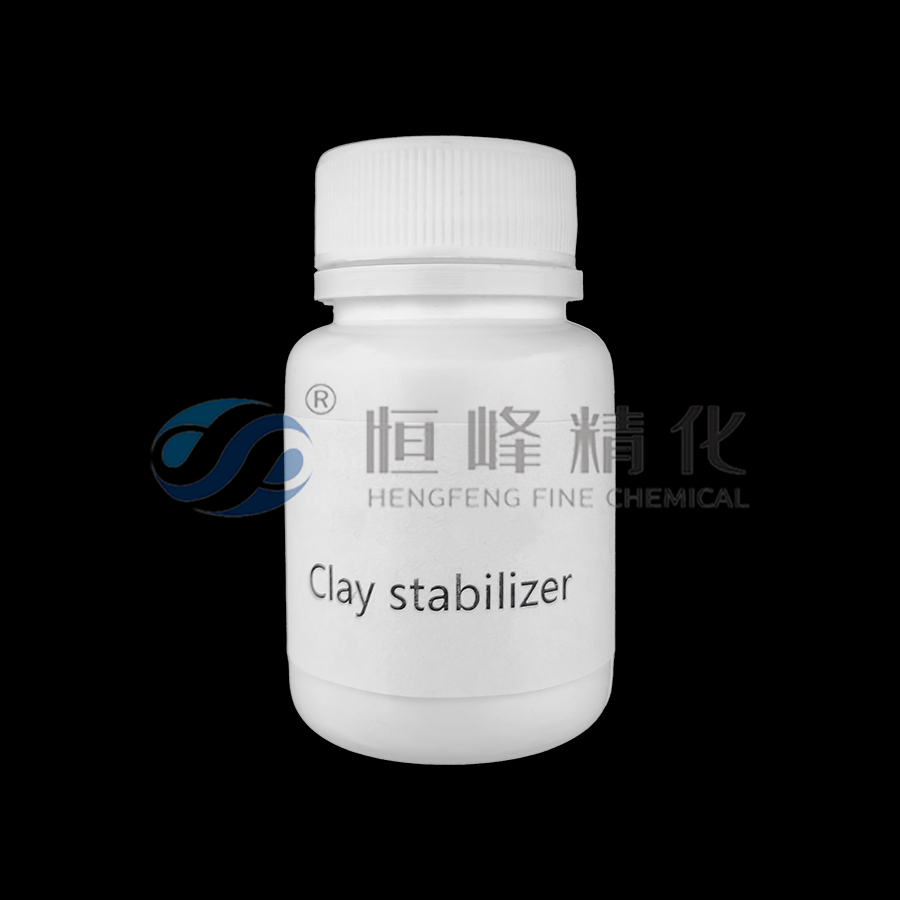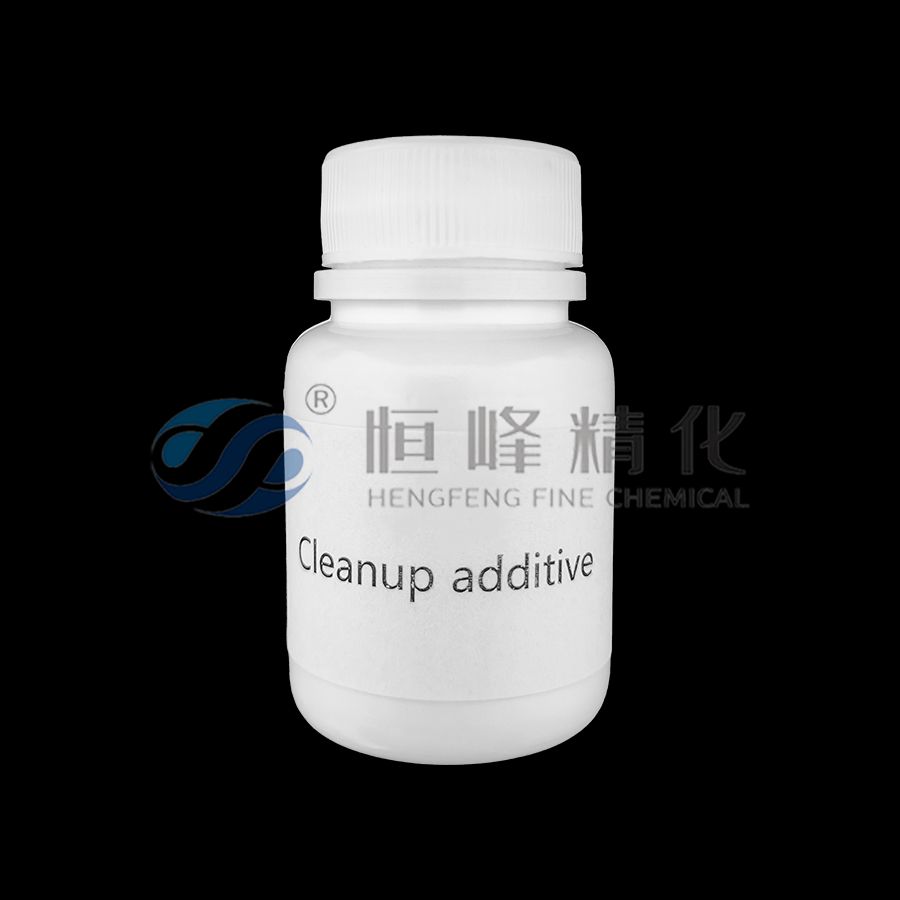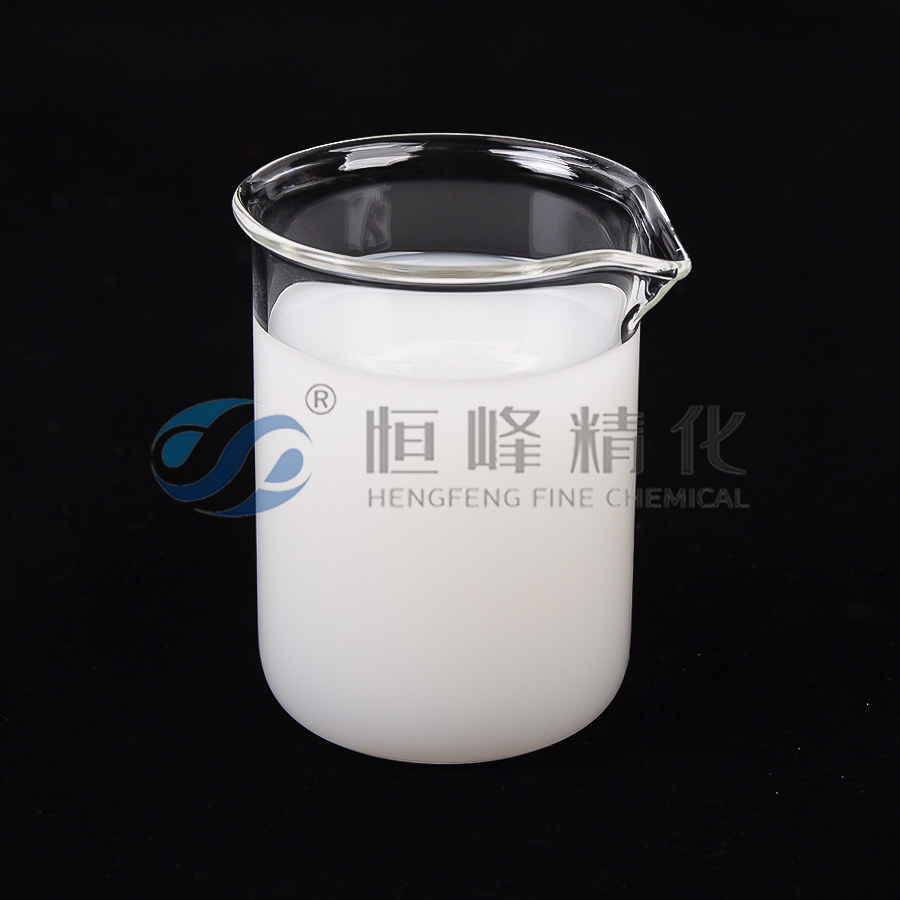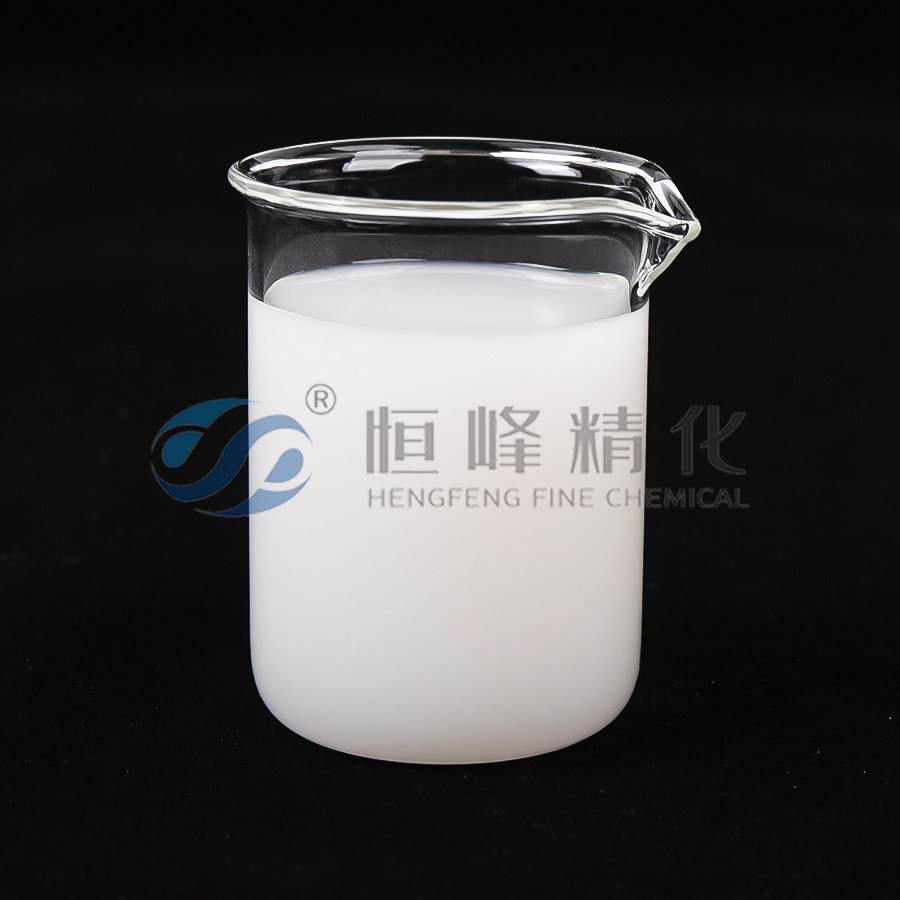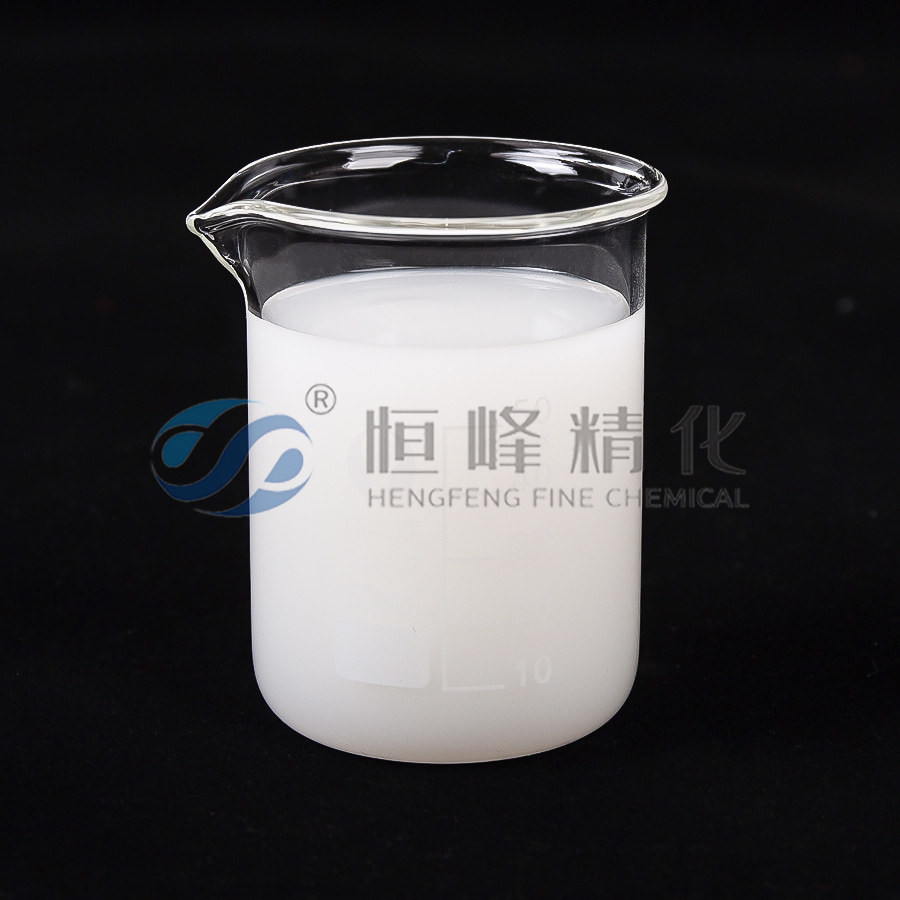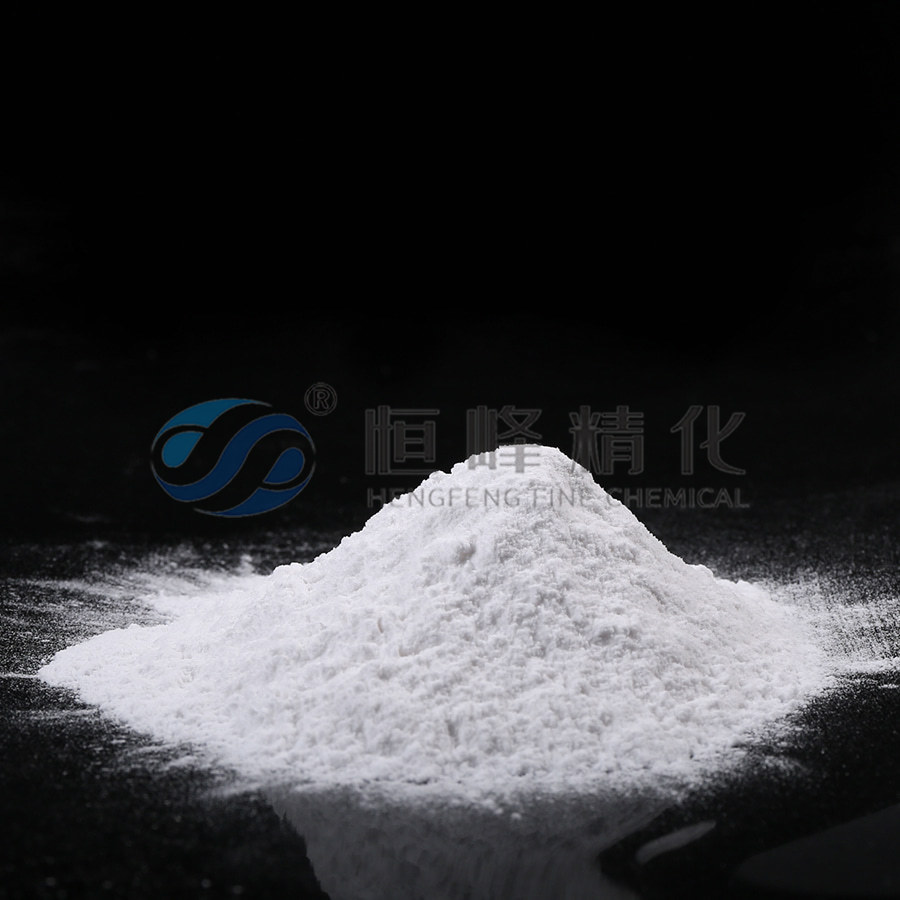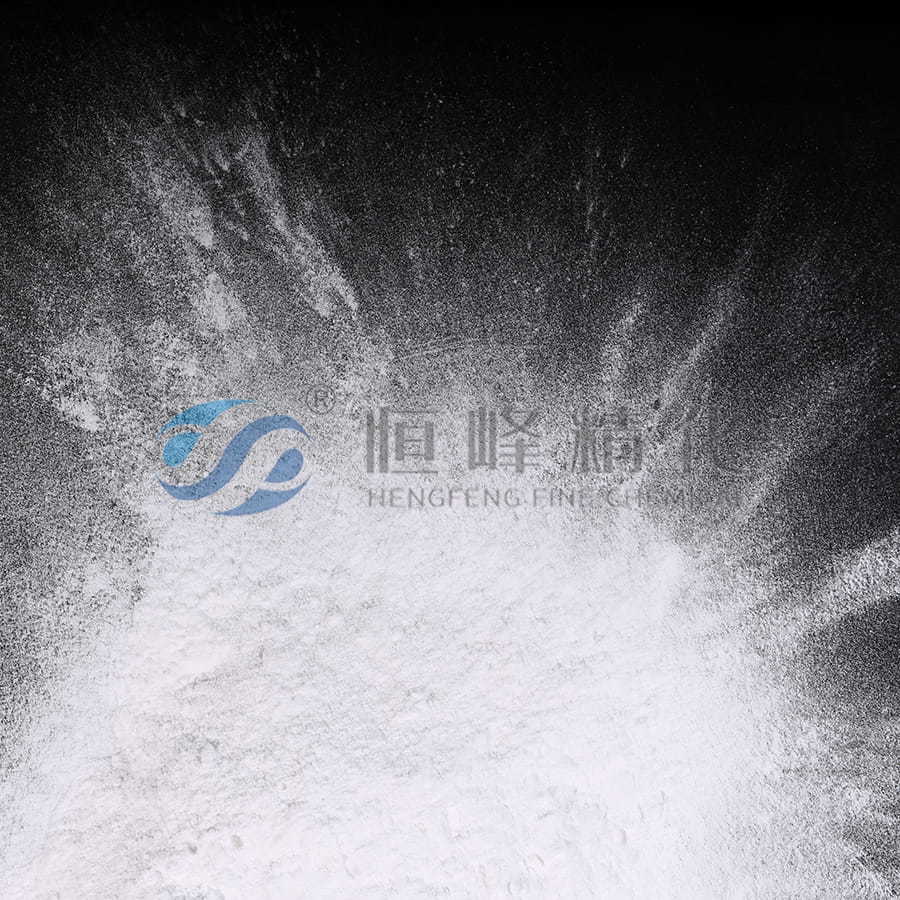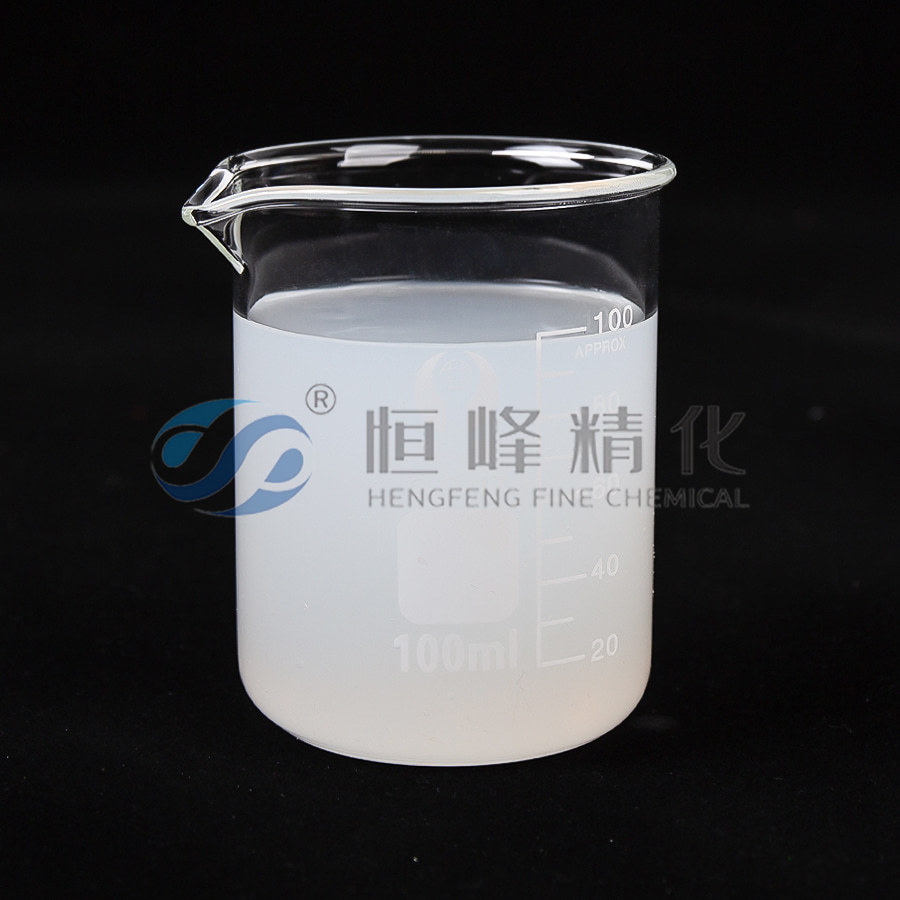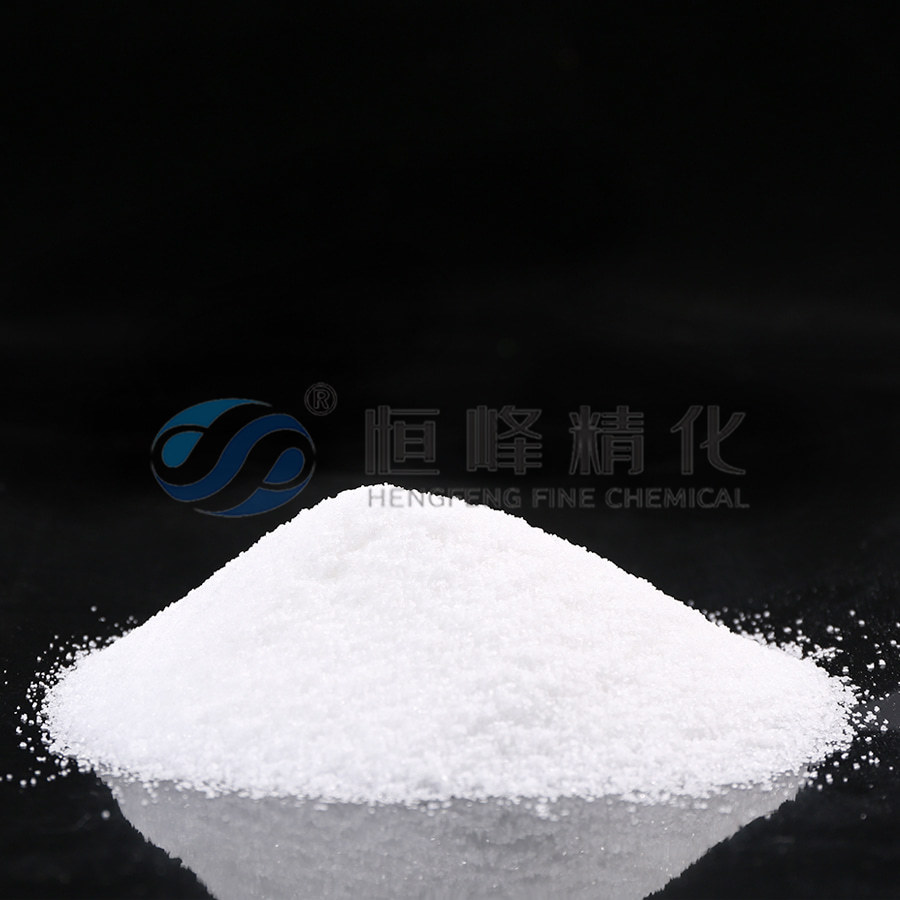Understanding Flocculants in Water Treatment and Choosing the Right Polymer
1.Introduction to Flocculants
1.1 What are Flocculants?
Flocculants are substances or agents used to promote the aggregation or clumping of fine particles suspended in water or wastewater. They help in the process of flocculation, where smaller particles combine to form larger clusters, called "flocs." This process is crucial in a variety of industries and applications, particularly in water treatment. By aiding in the removal of suspended solids, flocculants help improve the clarity and quality of water, making it safe for consumption or discharge.
Flocculants are typically used in combination with coagulants, chemicals that neutralize the charges on particles, making them more susceptible to aggregation. While coagulation causes the particles to bind together initially, flocculation enhances the size and strength of these clusters, ensuring their removal during filtration or sedimentation processes.
1.2 The Role of Flocculants in Water Treatment
In water treatment, flocculants play a pivotal role in removing impurities from both drinking water and industrial wastewater. The main function of a flocculant is to aggregate the smaller, suspended particles into larger masses that are easier to filter or settle. Whether dealing with turbidity, suspended solids, or organic contaminants, flocculants are essential for ensuring high water quality.
They are commonly used in municipal water treatment plants to remove organic materials, bacteria, and other contaminants. In industrial settings, flocculants help in processing wastewater to meet regulatory standards before discharge. They also support various other applications like sludge management, oil recovery, and even mining processes.
1.3 Coagulation vs. Flocculation: Understanding the Difference
While coagulation and flocculation are often used together in water treatment and wastewater treatemnt, it's important to understand how they differ and complement each other.
Coagulation is the first step, where chemicals (coagulants) are added to the water to neutralize the charges on suspended particles. This neutralization causes particles to form small, sticky clusters known as "microflocs."
Flocculation is the next step, where flocculants are added to the water. These flocculants bind the microflocs together, allowing them to grow into larger, more stable flocs that can be more easily removed from the water through sedimentation or filtration.
In simple terms, coagulation destabilizes the particles, while flocculation helps them to aggregate and settle out of the solution. Both processes are essential for efficient water treatment, working together to improve water quality and clarity.
2.Types of Flocculants
Flocculants come in various types, each designed to suit specific water treatment applications and conditions. The most common categories are cationic, anionic, and nonionic flocculants. The selection of the right type depends on factors like the water chemistry, the nature of suspended solids, and the desired performance.
2.1 Cationic Polymers
2.1.1 Definition and Properties
Cationic flocculants are polymeric compounds that carry a positive charge. This positive charge allows them to effectively bind to negatively charged particles, such as suspended solids in water. Cationic flocculants are typically water-soluble and are made from various materials like polyacrylamides (also referred as “PAM”), polyamines, and chitosans.
The primary property of cationic polymers is their ability to promote aggregation by neutralizing the negative charges on particles. This is especially effective in water with a high level of negatively charged solids or colloids, where electrostatic repulsion can hinder particle settling.
2.1.2 Applications in Water Treatment
Cationic flocculants are widely used in situations where a high charge density is required for rapid aggregation of particles. Common applications include:
1)Drinking Water Treatment: For improving the removal of organic and inorganic contaminants in drinking water.
2)Wastewater Treatment: Particularly in industry wastewater and municipal wastewater, where they aid in removing fine fibers and organic debris.
3)Sludge Treatment: Cationic flocculants can enhance the dewatering process by flocculating fine particles present in sludge, making it easier to remove water and reduce volume.
2.2 Anionic Polymers
2.2.1 Definition and Properties
Anionic flocculants are polymers that carry a negative charge. These flocculants are effective when dealing with positively charged or neutral suspended particles. The negative charge of the polymer interacts with positively charged particles in the water, causing them to aggregate into larger masses.
Anionic flocculants are generally more stable and less susceptible to hydrolysis compared to cationic flocculants. They are often used when water treatment involves minerals or inorganic solids that are positively charged or neutral.
2.2.2 Applications in Water Treatment
Anionic flocculants are commonly used in the following scenarios:
1)Wastewater Treatment: Particularly in municipal wastewater treatment plants, where they help to remove suspended solids and organic contaminants.
2)Mining Industry: For the separation of valuable minerals from waste materials in flotation processes.
3)Agricultural Runoff Treatment: To capture sediments and chemicals in stormwater or irrigation runoff, preventing contamination of natural water bodies.
2.3 Nonionic Polymers
2.3.1 Definition and Properties
Nonionic flocculants are neutral and do not carry any charge. These polymers rely on hydrogen bonding or van der Waals forces to aggregate particles. Their lack of charge makes them versatile and useful in a range of water treatment applications, particularly where both positive and negative particles are present in the water.
Nonionic flocculants are often used in cases where the pH levels are neutral or near-neutral and where specific charges on suspended solids do not dominate the process. They are also less sensitive to the ionic strength of water.
2.3.2 Applications in Water Treatment
Nonionic flocculants are used in several specialized applications, including:
1)Wastewater Treatment: Especially in industrial applications like the textile or chemical industries, where wastewater may contain a mix of organic and inorganic solids.
2)Sludge Management: In municipal and industrial facilities for enhancing the settling and dewatering of sludge.
3)Oil and Gas: Nonionic flocculants can be employed to separate oil from water in recovery and treatment processes.
3.Polyacrylamide (PAM): A Closer Look
Polyacrylamide (PAM) is one of the most widely used flocculants in both municipal and industrial water treatment processes. Known for its effectiveness and versatility, PAM plays a key role in enhancing floc formation, improving water clarity, and facilitating sludge dewatering. Let’s take a closer look at what makes PAM such a popular choice.
3.1 What is Polyacrylamide (PAM)?
Polyacrylamide is a synthetic polymer made from acrylamide monomers, which are linked together to form long polymer chains. The polymer can be modified to produce different types, such as cationic, anionic, or nonionic PAM, depending on the needs of the specific application. PAM’s high molecular weight and its ability to form strong bonds with suspended particles make it a highly effective flocculant.
This polymer is most often used in water treatment for its ability to improve sedimentation and filtration processes. The addition of PAM helps in binding suspended solids together, forming larger flocs that are easier to remove from the water.
3.2 How PAM Works as a Flocculant
PAM works by bridging particles together through its polymeric structure. The long chains of PAM molecules interact with particles in the water, creating flocs by forming physical and chemical bonds. The flocs grow larger as more particles are attracted to the polymer, eventually becoming large enough to settle out of the water or be removed by filtration.
The flocculation process can be optimized by adjusting the molecular weight and charge density of the PAM, ensuring it is tailored for specific water conditions and types of suspended solids.
3.3 Different Forms of PAM: Emulsions, Powders, and Solutions
Polyacrylamide is available in three main forms: emulsions, powders, and solutions. The choice of form largely depends on the application and the desired handling characteristics.
Emulsions: PAM emulsions are liquid-based products that are easy to handle and dissolve quickly in water. These emulsions contain PAM particles dispersed in an oil phase, which allows for a more concentrated form of the polymer that can be diluted on-site. Emulsions are ideal for large-scale applications and are often used in wastewater treatment plants.
Powders: Powdered PAM is typically used in smaller-scale applications and requires dissolution in water before use. It is highly concentrated and can be more economical for some processes.
Solutions: PAM in solution form is often pre-dissolved for ease of application. Solutions are convenient when a precise concentration is needed and are commonly used in industries like mining and paper processing.
3.4 Factors Affecting PAM Performance
The performance of PAM as a flocculant is influenced by several factors, including:
1)Water Chemistry: The pH, ionic strength, and hardness of water can all affect how well PAM performs. For example, high salt concentrations can reduce the effectiveness of some forms of PAM, especially cationic types.
2)Molecular Weight: Higher molecular weight PAM polymers are generally more effective at aggregating particles, but they may be slower to dissolve. Conversely, lower molecular weight polymers tend to dissolve faster but might not form as strong or large flocs.
3)Charge Density: The charge density (cationic, anionic, or nonionic) of the PAM will determine its interaction with different types of particles in the water. For example, anionic PAM is better suited for neutralizing positive charges on suspended solids, while cationic PAM works best with negatively charged particles.
4)Concentration: The dosage of PAM is also crucial for optimal performance. Too little polymer may fail to form adequate flocs, while too much can lead to excessive flocculation and poor sedimentation. Proper dosing is key to maximizing the flocculation process.
4.Applications of Flocculants in Water Treatment
Flocculants, particularly those like polyacrylamide, are utilized in a wide variety of water treatment applications. From municipal drinking water facilities to complex industrial wastewater systems, the need for effective water clarification and purification drives the demand for these agents. Let’s explore some of the most common uses of flocculants in different sectors.
4.1 Drinking Water Treatment
4.1.1 Removing Turbidity and Suspended Solids
In municipal water treatment plants, flocculants are primarily used to remove turbidity and suspended solids that make the water cloudy or murky. These impurities include organic matter, soil particles, algae, and microorganisms, all of which contribute to the poor quality of water.
By adding a flocculant, these fine particles clump together to form larger flocs that can be easily removed during sedimentation or filtration processes. This improves the overall clarity of the water, ensuring that it is safe for consumption.
4.1.2 Improving Water Clarity
Beyond the removal of suspended solids, flocculants also help in enhancing water clarity. They assist in the removal of other contaminants, such as color, odor-causing compounds, and organic pollutants, by aggregating them into larger particles that are easier to filter or settle. This is particularly important in drinking water plants where clear, clean water is essential for public health.
4.2 Wastewater Treatment
4.2.1 Primary Treatment: Enhancing Sedimentation
In the primary treatment phase of wastewater treatment, flocculants are added to help settle out large particles, such as sand, dirt, and organic waste. By facilitating the aggregation of fine suspended solids, flocculants enable these materials to form larger flocs that can quickly settle at the bottom of sedimentation tanks.
This process reduces the load on secondary treatment systems, such as biological filtration or chemical treatment, and helps to reduce overall treatment time and costs.
4.2.2 Secondary Treatment: Sludge Dewatering
In secondary treatment, flocculants are often used to improve sludge dewatering. Sludge, which is the byproduct of wastewater treatment, contains a large amount of water along with organic and inorganic solids. Flocculants help bind these solids together, forming larger, more easily removed flocs that aid in the dewatering process.
This makes it easier to separate the solid waste from the water, reducing the volume of sludge and minimizing the environmental impact of disposal. Sludge dewatering is a critical step in ensuring that treated wastewater meets environmental regulations before it is discharged.
4.3 Industrial Applications
4.3.1 Mining Industry
In the mining industry, flocculants are used in several processes, such as mineral recovery, tailings management, and water treatment. During mineral extraction, flocculants help separate valuable minerals from waste materials, enhancing the efficiency of flotation and sedimentation processes.
Flocculants also play a crucial role in managing tailings, which are the leftover materials after minerals are extracted. By helping to dewater tailings, flocculants reduce the volume of waste and minimize the risk of environmental contamination.
4.3.2 Paper Industry
The paper industry generates significant amounts of wastewater, which contains a mix of suspended fibers, fillers, and chemicals. Flocculants are used to treat this water, facilitating the removal of fine particles and improving the clarity of the effluent before it is discharged or recycled.
In addition to wastewater treatment, flocculants also improve the quality of paper production by enhancing the retention of fibers and fillers in the paper pulp, thereby improving paper strength and quality.
4.3.3 Oil and Gas Industry
The oil and gas industry uses flocculants to treat produced water, which is water that comes up with crude oil during extraction. This water often contains oil, solids, and other contaminants that need to be removed before it can be safely discharged or reused. Flocculants help by binding to the suspended oil droplets and solids, allowing them to be separated out for disposal or recycling.
Additionally, flocculants are used in drilling operations to treat water used in drilling fluids, helping maintain the integrity of the water used and reducing environmental impact.
5.Factors Influencing Flocculant Selection
The effectiveness of flocculants in water treatment depends on a variety of factors that must be carefully considered during the selection process. Understanding these factors helps ensure that the most suitable flocculant is chosen for each specific application, maximizing performance and minimizing costs.
5.1 Water Chemistry
Water chemistry plays a crucial role in determining which flocculant will work best. Variations in pH, alkalinity, and the presence of other chemicals can significantly affect the flocculation process.
5.1.1 pH Level
The pH of the water determines the charge of particles and how well they interact with flocculants. For example, flocculants that are anionic (negative charge) perform best in alkaline conditions, while cationic flocculants (positive charge) are more effective in acidic or neutral waters.
When choosing a flocculant, it is essential to match the product to the pH range of the water to ensure optimal performance. If the water's pH fluctuates significantly, the performance of the flocculant may be compromised, leading to inefficient flocculation.
5.1.2 Alkalinity
Alkalinity, which refers to the water's ability to neutralize acids, also influences flocculant selection. Water with higher alkalinity tends to support better floc formation and settling. In cases of low alkalinity, the water may require the addition of chemicals, such as lime, to enhance the performance of certain flocculants.
5.1.3 Presence of Other Chemicals
The presence of other chemicals in the water, such as salts, metal ions, or organic compounds, can interfere with the flocculation process. For example, high concentrations of salts can reduce the effectiveness of anionic flocculants, while some chemicals may cause unwanted interactions or hydrolysis, affecting floc quality and settling rates.
When selecting a flocculant, it’s important to account for the water’s total chemical composition to ensure compatibility and achieve the desired results.
5.2 Type of Suspended Solids
The nature and charge of the suspended solids in the water will influence the type of flocculant chosen. Some flocculants work better with organic solids, while others are more effective with inorganic or mineral-based particles.
Organic Solids: These include biological materials like algae, bacteria, and proteins. Cationic flocculants are typically more effective for binding to these materials due to their positive charge.
Inorganic Solids: These include particles like sand, silt, and clay. Anionic flocculants tend to work better with these types of suspended solids, as their negative charge attracts the positively charged particles.
Knowing the composition of the suspended solids helps in selecting the flocculant that will provide the best aggregation, settling, and removal performance.
5.3 Dosage and Mixing
The effectiveness of a flocculant is also dependent on its dosage and the mixing process. The correct dosage ensures that enough polymer is added to form stable flocs, while the mixing process ensures even distribution throughout the water.
Dosage: Too little flocculant may lead to insufficient floc formation, while too much can result in overly dense flocs that do not settle properly. Inappropriate dosing can also increase operational costs and cause excessive chemical usage.
Mixing: Proper mixing is essential for ensuring the flocculant comes into contact with all suspended particles. Insufficient mixing can result in ineffective flocculation, while excessive mixing can break up the formed flocs.
A balance between the right dosage and mixing intensity must be achieved to optimize the flocculation process.
6.How to Choose the Right Flocculant
Selecting the right flocculant is essential for achieving optimal performance in water treatment processes. Given the variety of flocculants available and the many factors at play in water chemistry, it’s crucial to employ practical methods to make the best choice for a given application. Here are some approaches that can help ensure a successful selection process.
6.1 Jar Testing: A Practical Approach
Jar testing is a common method used to evaluate and select the most suitable flocculant for a particular water source. It involves simulating the flocculation process in a small-scale laboratory setting to observe how different flocculants behave with the specific water sample.
During jar testing, water samples are treated with various concentrations of different flocculants, and the resulting floc formation, settling behavior, and water clarity are monitored. The goal is to identify the flocculant that produces the largest, most stable flocs with the fastest settling rate, while also achieving the desired level of water clarity.
By comparing the performance of multiple flocculants in jar tests, operators can make data-driven decisions about which flocculant will work best in their full-scale treatment process.
6.2 Evaluating Floc Size and Settling Rate
When selecting a flocculant, it's important to consider both the size of the flocs and their settling rate. Ideally, the flocs should be large and strong enough to settle quickly without breaking apart. The size and rate of settling are influenced by factors such as:
1)Molecular Weight: Higher molecular weight flocculants tend to produce larger, more robust flocs, but they may take longer to dissolve and act. On the other hand, lower molecular weight flocculants may result in smaller, less stable flocs that settle more slowly.
2)Charge Density: The charge of the flocculant (cationic, anionic, or nonionic) affects how effectively it binds with particles, influencing floc size and settling characteristics.
Flocculants that produce large, dense flocs with a rapid settling rate are more efficient, as they reduce the time and energy required for subsequent filtration or sedimentation.
6.3 Cost-Effectiveness Analysis
Cost is always a factor when selecting flocculants, especially in large-scale water treatment operations. While it’s essential to choose a flocculant that performs well, it’s equally important to ensure that it is cost-effective over the long term. Factors to consider include:
1)Initial Cost: The price of the flocculant, including any shipping or handling costs, is a primary concern. However, the initial cost may not be the only consideration.
2)Usage Efficiency: A more efficient flocculant may require lower dosages to achieve the same result, which can reduce operational costs.
3)Maintenance and Disposal: Some flocculants may require specialized handling, storage, or disposal procedures, which can add to the overall cost. Additionally, the residual sludge produced from the flocculation process may need to be treated or disposed of, which adds another layer of expense.
7.Safety and Handling of Flocculants
While flocculants are generally safe to use in water treatment processes, proper handling, storage, and disposal are essential to ensure safety for workers, the environment, and the effectiveness of the treatment. Below are some guidelines for the safe use and management of flocculants.
7.1 Proper Storage Conditions
Flocculants, particularly in powder or emulsion form, should be stored in a cool, dry, and well-ventilated area. Exposure to extreme temperatures, humidity, or direct sunlight can degrade the effectiveness of the flocculant. The storage containers should be tightly sealed to prevent contamination and absorption of moisture, which can cause clumping or loss of efficacy.
Powdered Flocculants: These should be kept in moisture-proof packaging to prevent them from absorbing water and forming lumps.
Emulsions and Solutions: These should be stored at the recommended temperatures and kept away from freezing, as freezing can cause the flocculant to lose its properties or separate into unusable layers. These should also be kept out of sun.
It is also important to ensure that the storage area is free from contamination by chemicals, solvents, or any other substances that might affect the flocculant’s performance.
7.2 Handling Precautions
Although flocculants are not typically hazardous, certain handling precautions should be taken to ensure the safety of workers involved in their application:
Protective Equipment: Wear appropriate personal protective equipment (PPE), including gloves, goggles, and respiratory protection, when handling flocculants in concentrated forms. This is particularly important for powdered or dusty formulations, as inhalation of dust can irritate the respiratory system.
Avoiding Direct Contact: While most flocculants are not harmful in small quantities, direct contact with skin or eyes should be avoided. In case of accidental exposure, wash the affected area with plenty of water.
Handling Emulsions and Solutions: Flocculant emulsions and solutions should be handled with care to prevent spills or leaks. Proper spill containment and clean-up protocols should be in place, especially in larger industrial applications.
7.3 Environmental Considerations
Flocculants, if not properly managed, can have an environmental impact, particularly if they enter natural water systems. Therefore, it is important to adhere to environmental regulations regarding the use and disposal of flocculants.
Disposal of Residual Sludge: After the flocculation process, the residual sludge must be properly handled and disposed of according to local environmental laws. This may involve dewatering the sludge, neutralizing any toxic substances, and ensuring that it is disposed of in a safe and environmentally friendly manner.
Minimizing Chemical Use: Use the minimum effective dose of flocculant to reduce environmental impact. Overuse of flocculants can result in excessive polymer residuals that may harm aquatic ecosystems if discharged.
Non-toxic Alternatives: Consider using bio-based or non-toxic flocculants, such as natural polymers or bio-flocculants, when possible. These alternatives are more environmentally friendly and break down more easily in natural systems.
8.Conclusion
8.1 The Future of Flocculants in Water Treatment
The use of flocculants in water treatment has been a cornerstone of modern purification processes, and their importance is only expected to grow in the coming years. As water scarcity and pollution continue to be pressing global challenges, the demand for efficient and sustainable water treatment solutions will drive further advancements in flocculant technology.
One of the most promising developments is the increasing focus on bio-based flocculants and environmentally friendly alternatives. These innovations offer an eco-conscious way to enhance flocculation without relying on synthetic chemicals, thus reducing the environmental impact. Additionally, advancements in nanotechnology and polymer modification are leading to more efficient and customizable flocculants, improving performance across a wide range of applications.
As industries and municipalities seek to meet stricter environmental standards and reduce operational costs, the versatility and effectiveness of flocculants will continue to play a critical role in water treatment processes worldwide.
8.2 The Benefits of Effective Flocculant Use
The benefits of effective flocculant use extend beyond just improving water quality. Properly selected and applied flocculants can offer:
1)Cost savings: By improving efficiency and reducing chemical usage, flocculants help lower operational costs over time.
2)Enhanced treatment efficiency: Flocculants increase the rate of sedimentation and improve the clarity of water, speeding up the treatment process.
3)Environmental protection: Flocculants help in meeting stringent environmental regulations by ensuring that wastewater is properly treated before being released into natural water bodies.
4)Resource conservation: Efficient flocculation reduces the need for excessive water treatment chemicals and energy, contributing to a more sustainable water treatment process.
In summary, flocculants are a vital tool in modern water treatment. Whether used for drinking water, wastewater treatment, or industrial processes, their ability to aggregate suspended particles and improve clarity helps provide clean, safe water and supports compliance with environmental standards. With ongoing innovations in flocculant technology, the future of water treatment looks brighter and more sustainable than ever.
Jiangsu Hengfeng Fine Chemical is a dedicated PAM(polyacrylamide) factory in China. Our products covers cationic, anionic, nonionic PAM, which could meet the different requirements from wastewater treatment, oil field, mining and papermaking. With 3000 partners all over the world, we have plenty experience dealing with wastewater. Hengfeng are making our effort for the cause of partner profit and environmental protection. We provide service including inquiry, lab test and pilot test to our partner for free. We provide not only products but also service. We will choose the suitable polyacrylamide according to the wastewater type and on-site facility to achieve the best using effect and experience.


 English
English Español
Español عربى
عربى Русский
Русский Tiếng Việt
Tiếng Việt





